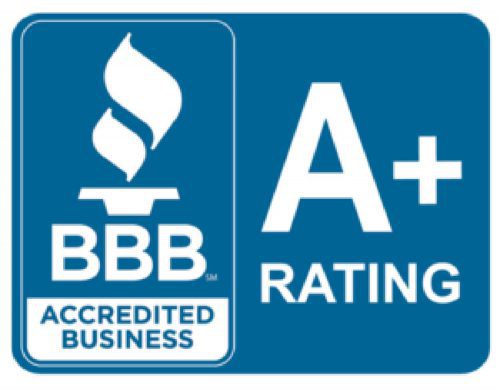Torticollis (Wry Neck)
Torticollis, or wry neck, is a condition where the neck alignment of a baby is twisted in an abnormal way, where the chin points upward while the head tilts to one side. The condition can appear at birth, as it’s congenital, or it can be inherited. It can also happen as a result of a difficult birth or if the baby is in an unusual position or cramped inside of the uterus.
This condition may arise if a doctor uses too much force with their hands or medical instruments to deliver a baby. Utilizing forceps or a vacuum extractor the improper way could lead to wry neck. Torticollis occurs in 3 out of every 100 babies, and it will either show up at birth or within three months typically. It is usually easy to treat unless a severe case of torticollis happens.
Symptoms of Torticollis
If your baby has torticollis, you may notice some of these symptoms:
- Limited range of motion in a baby’s head or neck
- A small and soft lump in the neck
- The head is tilting to one side
- There are musculoskeletal problems like hip dysplasia
- A flat spot shows up behind one ear and on the side the baby looks toward
- A baby prefers one breast for breastfeeding over the other
- Frequent head tilting occurs, and a baby could vomit, get drowsy, or become irritable
If you believe your baby has torticollis, then a doctor will have to diagnose the issue. They will do this with a visual and physical exam to see if the alignment issues are stemming from this condition or something else. Your doctor may also order a CT scan or EMG of your baby’s neck area to be certain that torticollis is occurring.
Treatment for Torticollis
Usually, torticollis is only temporary and can be treated with simple exercises. For instance, your doctor may ask you to try to get your baby to turn their head in both directions, which will tighten loose neck muscles and loosen the tense ones. Your doctor will give you more exercises you can do with your baby at home when they are between two and six months old.
In most cases, these exercises will help. But if the torticollis is more severe, then your baby might have to go to physical therapy. The physical therapist may require you to take your baby to appointments every two to four weeks so they can do different exercises and observe the baby’s progress. They might measure how many degrees your baby can turn their head, as well as look into head shape issues that could be occurring. The physical therapist could recommend that your baby wears a helmet.
If torticollis persists, then your child may have to undergo surgery when they are around preschool age. The goal of the surgery is to lengthen the sternocleidomastoid muscle, which will correct the torticollis.
How Do I Know if Medical Malpractice Caused Torticollis?
Since torticollis could occur because of issues inside the womb, then it may not be caused by medical malpractice. However, if you had a difficult labor and believe the doctor used too much force with their hands or a medical instrument, then you could absolutely have a case of medical malpractice.
The thing is that there’s no way to be certain that medical malpractice actually occurred unless you call a birth injury malpractice lawyer. Your lawyer – who should have experience with torticollis cases – will let you know your professional opinion and if they think malpractice happened. What they will do is ask you for details about your case and collect evidence such as your medical records and bills, photos of your baby’s injury, and witness statements you gathered from people who were there when you gave birth. If you are lacking any of these, don’t fret, because your lawyer will help you collect what you need.
You should note that it’s very difficult to prove medical malpractice, especially if you try to bring about a lawsuit on your own. The law makes it hard to sue doctors because if it were so simple, doctors would get sued all the time. Then, nobody would want to go into the profession. So you’ll have to have strong evidence going into it and trust that your lawyer knows what they are doing.
How Much Will I Receive From a Torticollis Settlement?
There is no way to predict how much of a settlement you will receive for your torticollis case. However, your lawyer could go after damages like:
- Medical bills
- Loss of companionship and enjoyment of life
- Pain and suffering
- Future medical care
- Loss of earning capacity
Your final settlement number will depend on the severity of your baby’s torticollis. If it heals within a few months after some physical therapy appointments, then the settlement will not be as high. If, however, your child has to undergo surgery when they are older to try to cure their torticollis, then the settlement will likely be higher. This is because your lawyer will factor in future medical costs as well as pain and suffering you and your family may endure.
The best thing to do is keep records and receipts of all your appointments, equipment you need to invest in, and other medical costs, even if they’re covered by insurance. Your lawyer will attempt to have all of your costs covered, since it’s not fair that you have to pay them in the first place.
Settlement Offers in a Torticollis Case
The way the legal process works is that first, you get in touch with your birth injury lawyer. Then, you provide them information about your case such as what happened when you were in labor and gave birth, and if the condition could possibly be genetic. You should also let them know about evidence you have like those medical records and receipts, photos, and witness statements.
Once your damages have been calculated, your lawyer will then reach out to the defendant, who is the doctor or another healthcare professional who delivered your baby. They will attempt to settle the damages and get you what you deserve. If they come back with a number that is not suitable to you, they could renegotiate. If the defendant does not want to settle, then you have the option to go to court.
In court, you and your lawyer will present the evidence, and your lawyer will likely bring in an expert witness with a comparable background to your healthcare provider to help prove medical malpractice. The court could possibly award you a higher settlement, but there are no guarantees. With all of these steps, your lawyer will make sure you do as little as possible so that you can focus on caring for your child in their time of need.
Why Contact a Birth Injury Attorney?
A birth injury lawyer will pursue compensation when you’re just too busy and overwhelmed to do it yourself. They will let you know if you’ll be able to prove medical malpractice and what kinds of damages you might receive. You can rest assured that your case is being handled without having to stress about it.
Torticollis Birth Injury Attorneys
If you need help from a birth injury attorney, then Gilman & Bedigian is here for you. We have experience representing clients whose babies have torticollis and we’d be happy to hear what happened in your case.
Contact Gilman & Bedigian 24/7 for a free consultation at (800) 529-6162.











